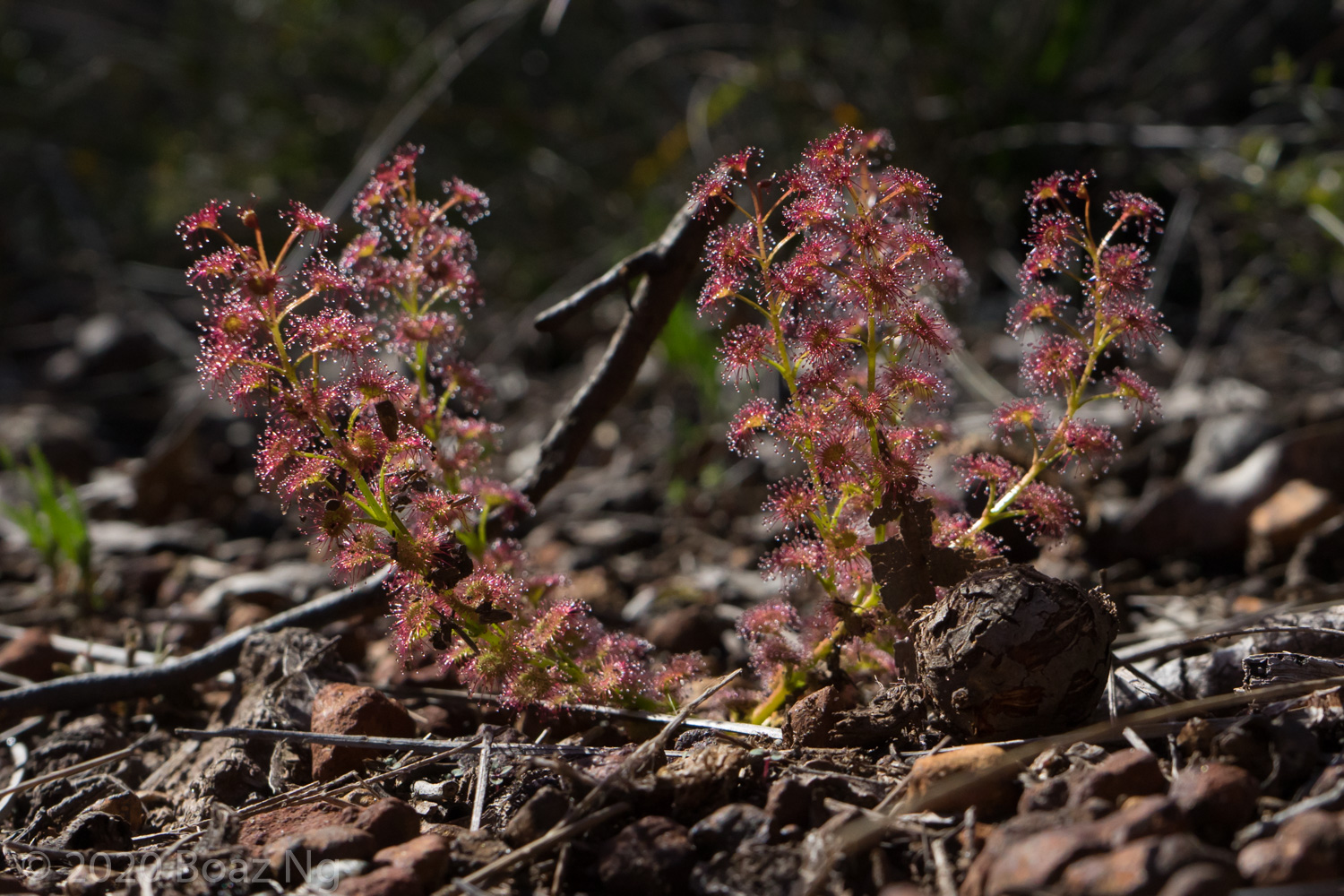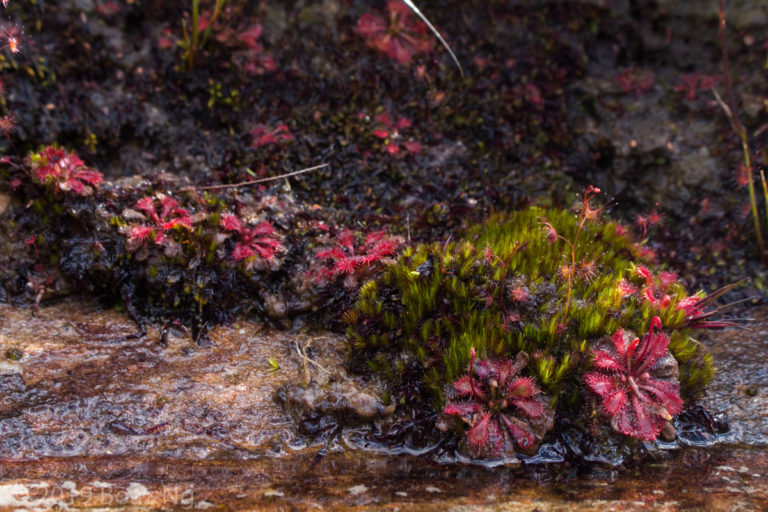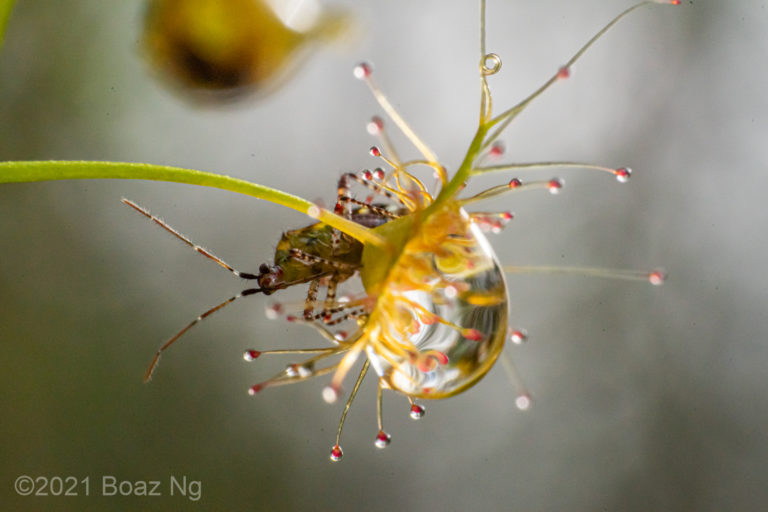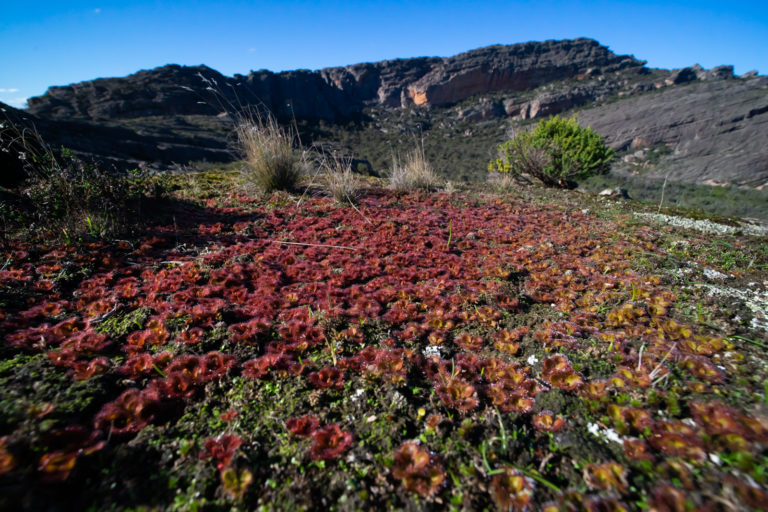The Drosera section Stolonifera contains some of the most interesting species in my opinion. Despite their widely varying morphology, these plants are united by fan shaped leaves and relatively late emergence towards the end of winter. I sighted 8 species during my WA trip in 2019.
The type species Drosera stolonifera grows in coastal regions from around Perth down to the South West region. It inhabits peaty substrates around swamps and in forested areas. The species has a fleshy basal rosette, out of which emerges several 3 or more semi-erect stems. These stems have whorls of fan shaped leaves at regular interals and can be up to 25 cm long. The flowers are borne out of a scape that emerges from the basal rosette, terminating in an inflorescence of many white blooms.
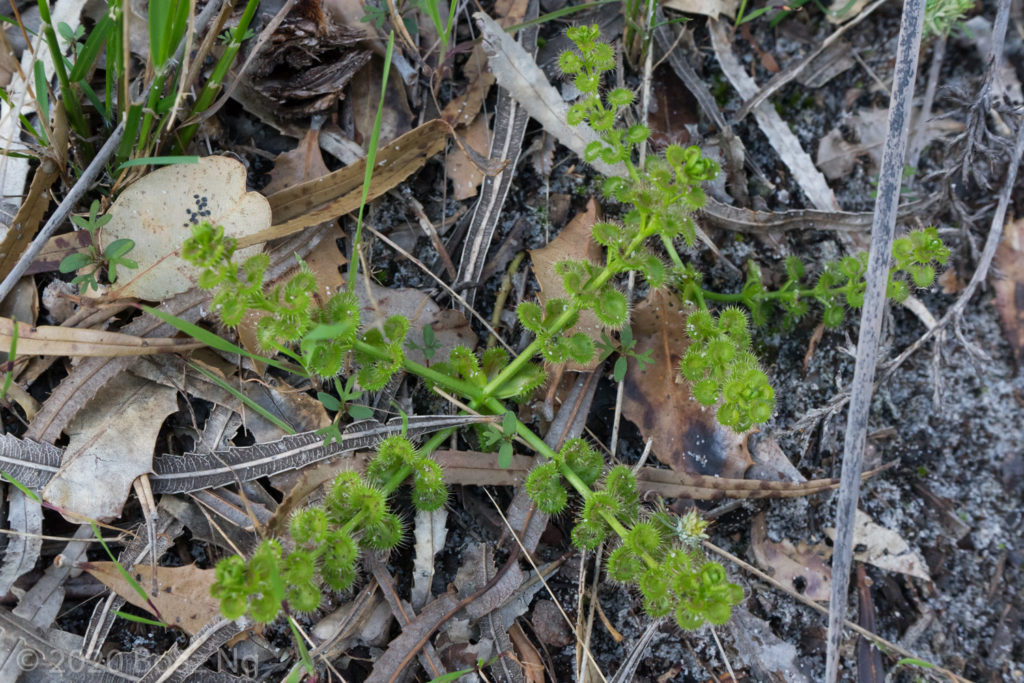
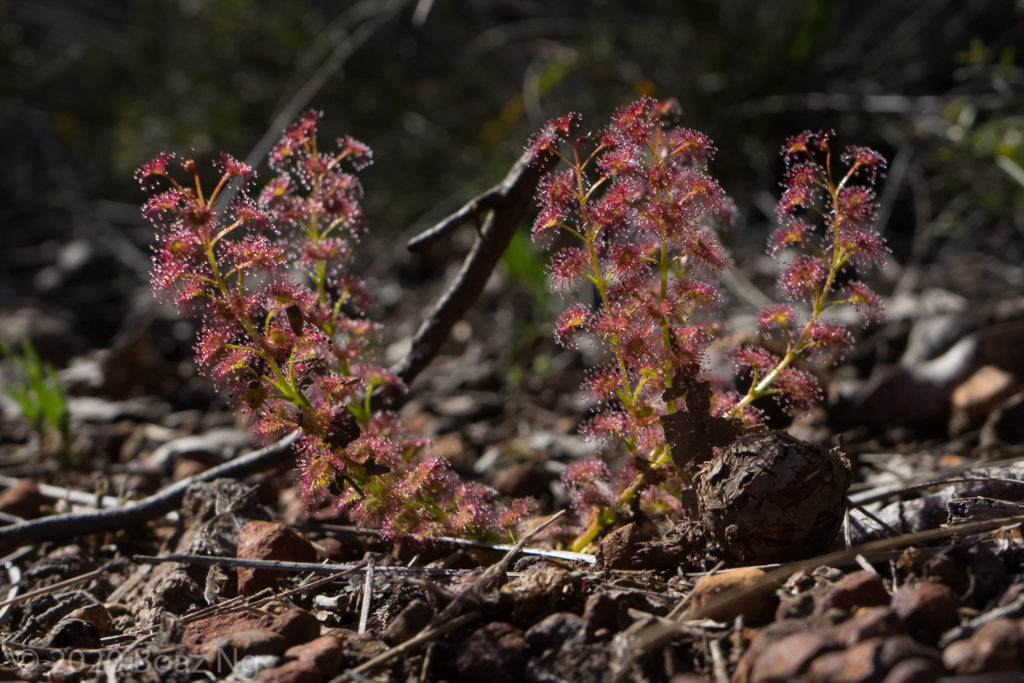
Another species that shares the sprawling morphology of the type is Drosera rupicola. This species grows in the inland Wheatbelt region and colonises loam and moss aprons around the massive granite outcrops in the region (rupes = rock, cola = dweller). The plants are very robust, forming thick stems and large paddle shaped leaves in a similar arrangement to Drosera stolonifera. In contrast, the overall profile of the plants is more prostrate, with the stems loosely hugging the ground and the leaves generally upturned such that they are horizontally placed. A profusion of flowers borne on a thin inflorescence, emerge from the central rosette at the same time the leaves when the plants break dormancy at the end of winter. The plants are variable in colour, ranging from golden green to vivid red.
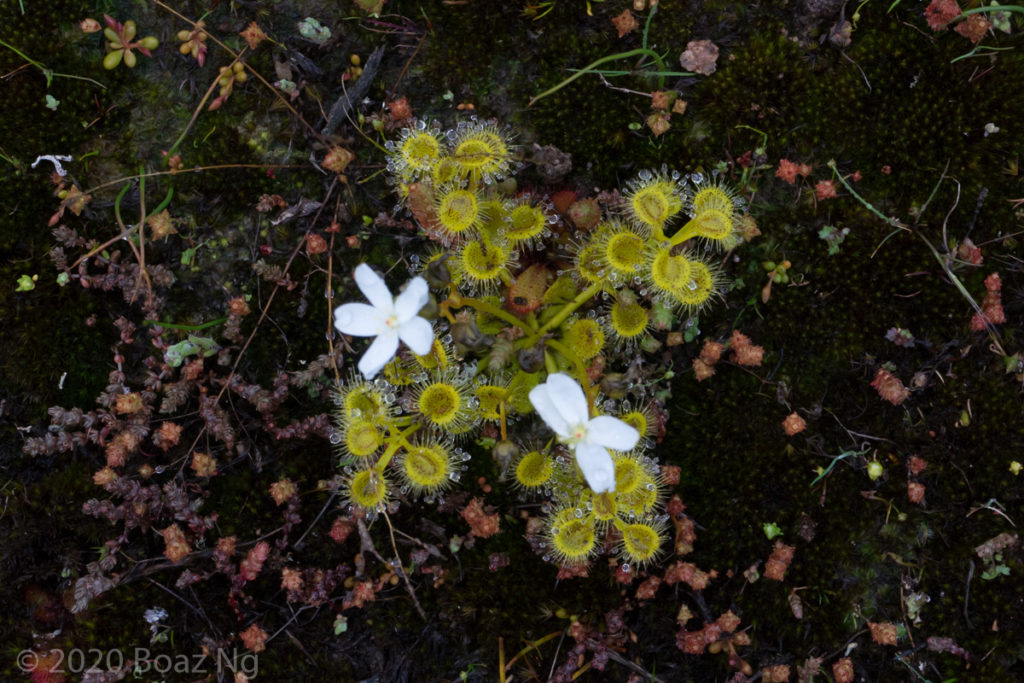


The next species with a similar sprawling morphology is Drosera humilis. This species grows in the heathy sandplains extending from Perth towards Shark Bay. In contrast to the previous two species, the stems and long petioles of Drosera humilis are very thin and the plant adopts more prostrate profile (humilis = low growing). That being said, freshly emergent stems can be semi erect. The floral inflorescence typically emerges earlier than the leaves, and it is not uncommon to find bunches of flowers without any accompanying stems.

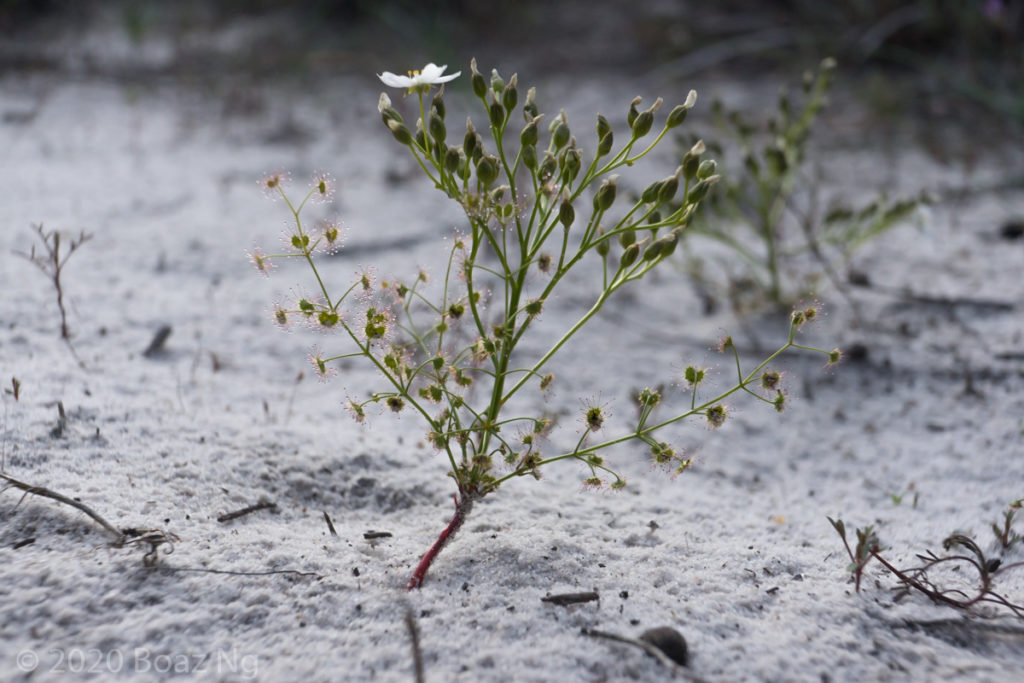
A second morphological group in the complex consists of plants that form erect stems that rise vertically from the ground. One such example is Drosera porrecta, which is broadly distributed in the sandplains from Bunbury to Geraldton and into the Darling Range east of Perth. The species forms two or three tightly clustered basal rosettes along a single stem that is held above the ground. Out of the last basal rosette emerges a fleshy erect stem (typically one, but up to three) with regularly spaced clusters of leaves arranged symmetrically around the central stem. Flowering specimens have a large inflorescence in place of the central stem, with vegetative leaf stems emerging from the basal rosette.
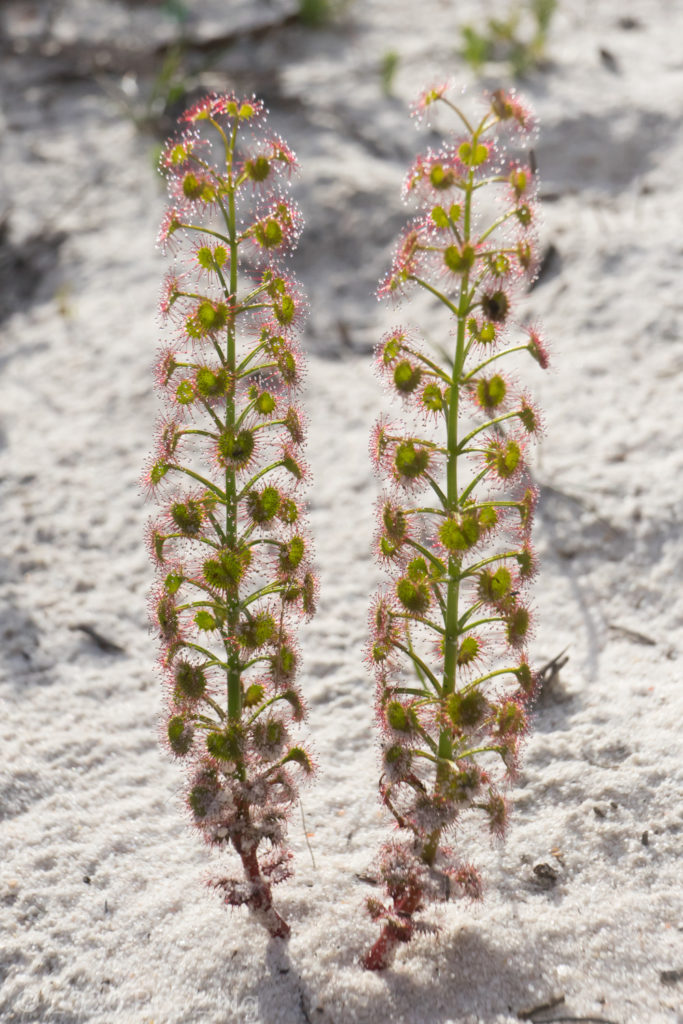
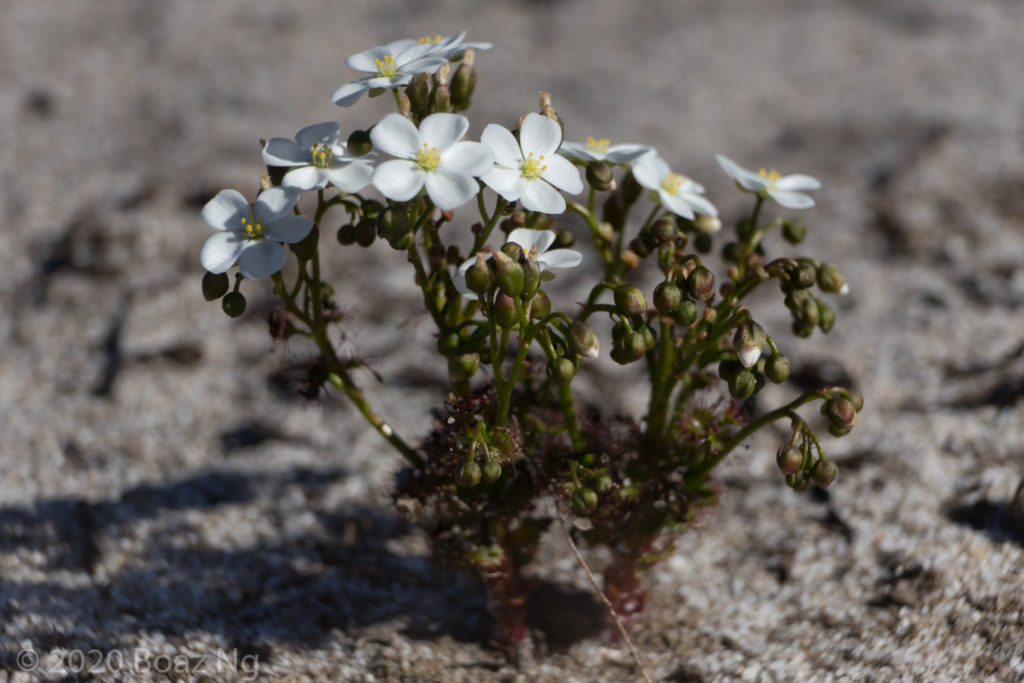
The next erect species is Drosera ramellosa, which is distributed along saturated soils in the Great Southern region of WA. In contrast to D. porrecta, this species has alternating solitary leaves, which are held tightly to a single main stem to form a somewhat spiraling profile. Its floral inflorescence emerges at the terminal point of the vegetative stem. The species emerges comparatively late to other tuberous Drosera, breaking dormancy towards the end of winter.
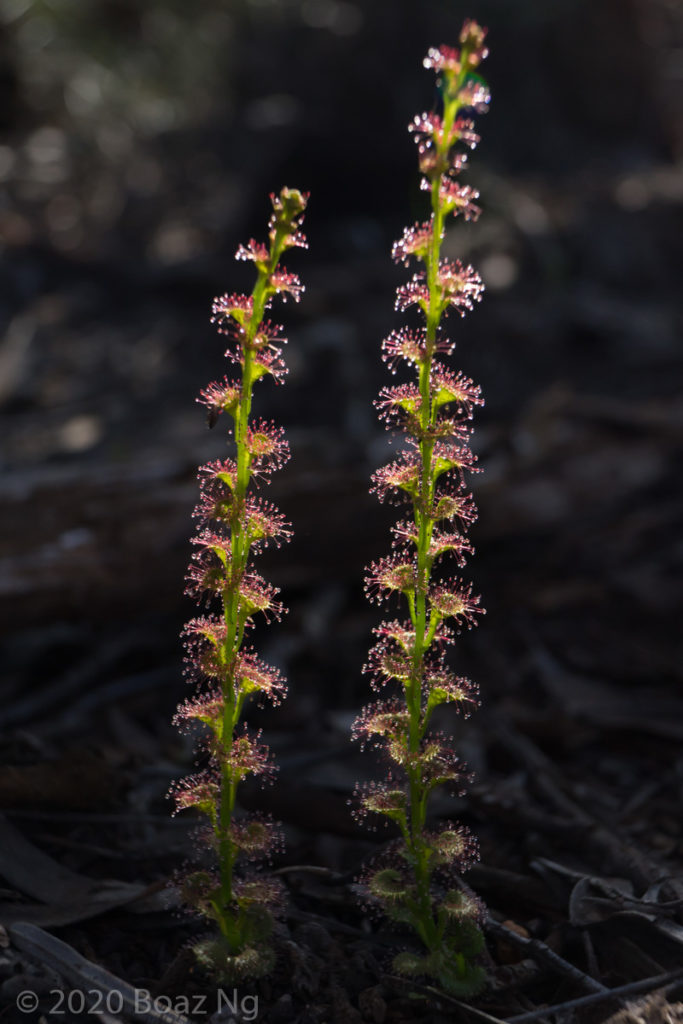
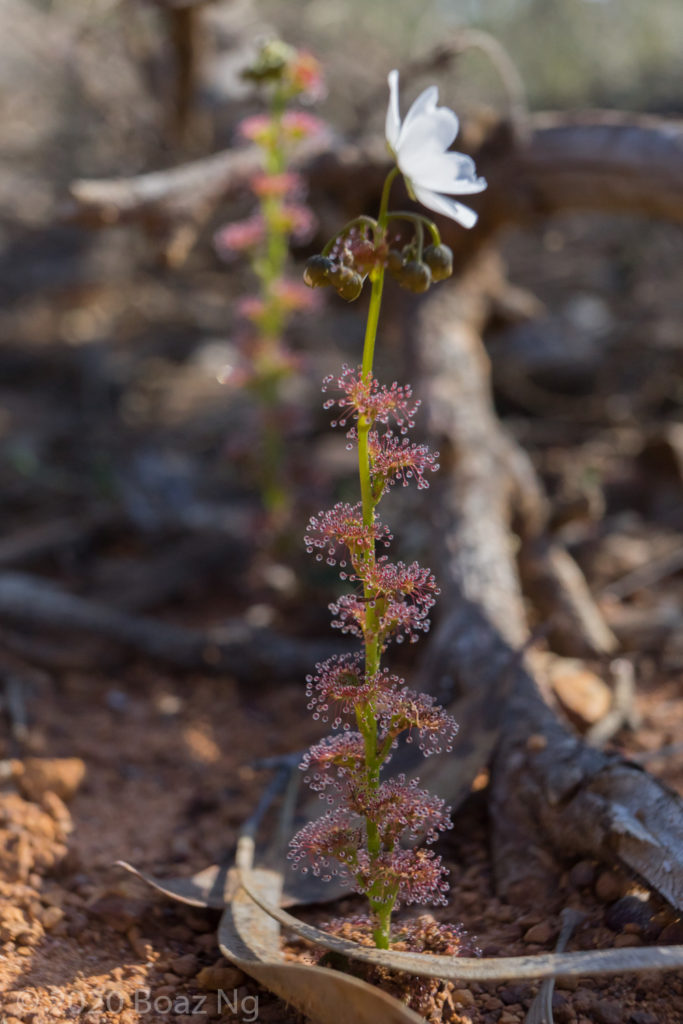
A somewhat similar species is Drosera ramellosa, which also bears alternating single leaves across an erect stem. It is widely distributed from the north of Geraldton to Albany and across to the Esperance area, growing in saturated soils on the shores of waterways and also on the drainage fields of granite outcrops. This species differs from D. platypoda by its inflorescence, which emerges directly from the basal rosette. The plants are mostly green and often bear multiple erect stems from a single rosette.

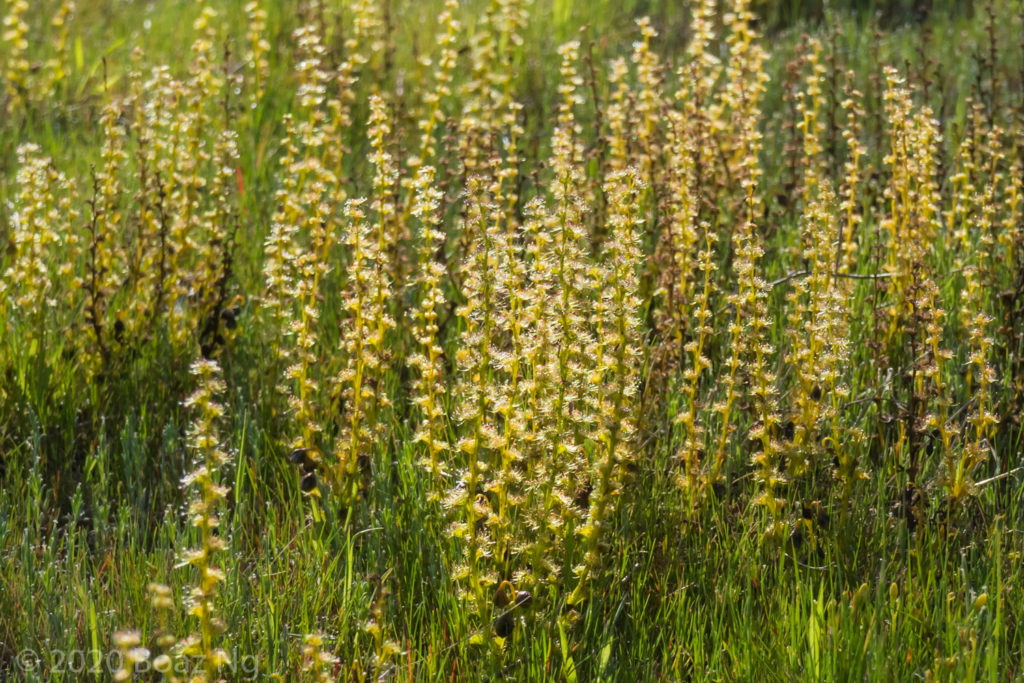
The last morphological group consists of two plants with a compact morphology. Drosera purpurascens grows broadly from the Great Southern region up the inland hills towards the Darling Range south east of Perth. The species has a strong basal rosette out of which emerges 2-5 semi-erect lateral stems. These stems are somewhat similar to Drosera stolonifera in that they have regular nodes of leaves, but are shorter, typically bearing only one or two (but up to four) such nodes. The petioles fixing the lamina to the stem are long and thin. Leaves can also emerge directly from the basal rosette, especially on younger specimens. The floral inflorescence is borne on a scape that emerges from the central rosette. The plants are commonly a reddish colour, drying to a purple in herbarium specimens, which give it its specific name. It grows in a range of substrates from sandy lateric soils in heathland to sandy clays in woodland and atop moss on granite outcrops.
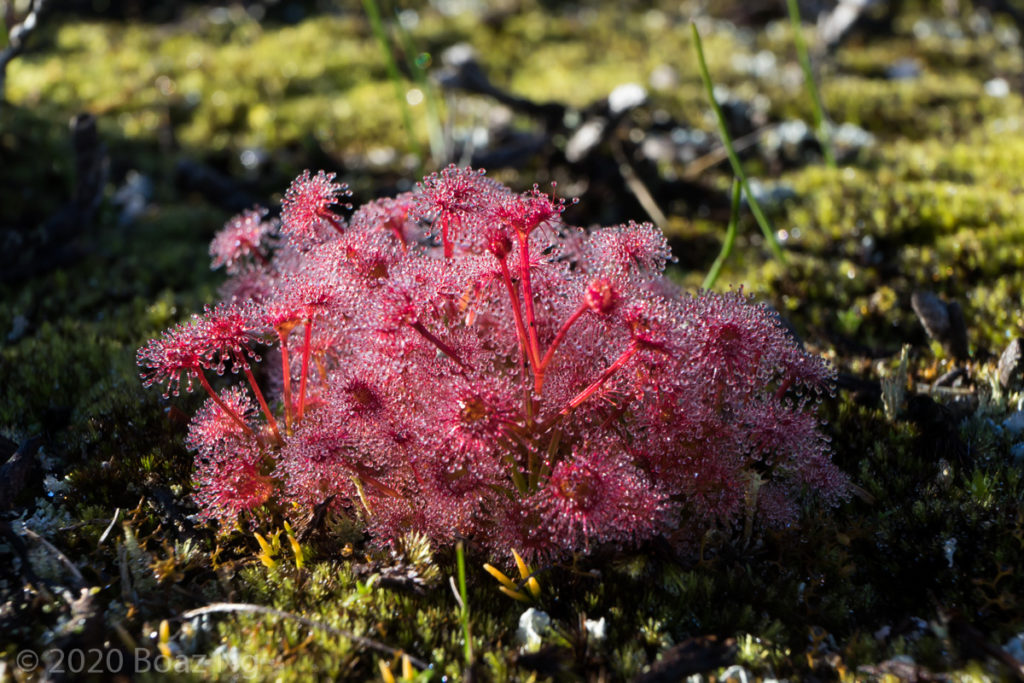
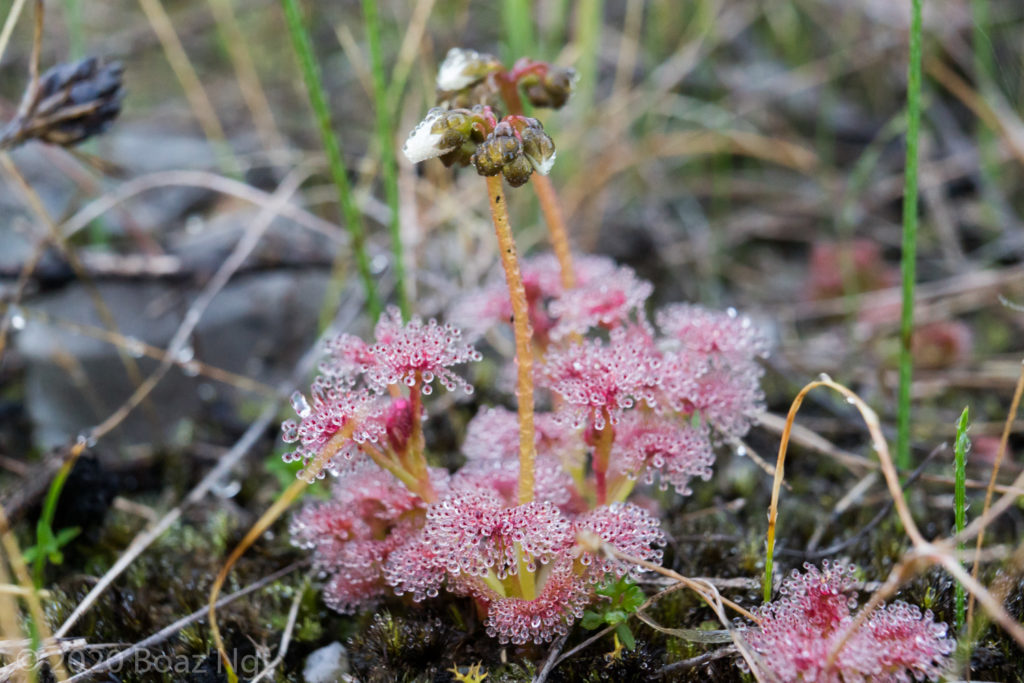
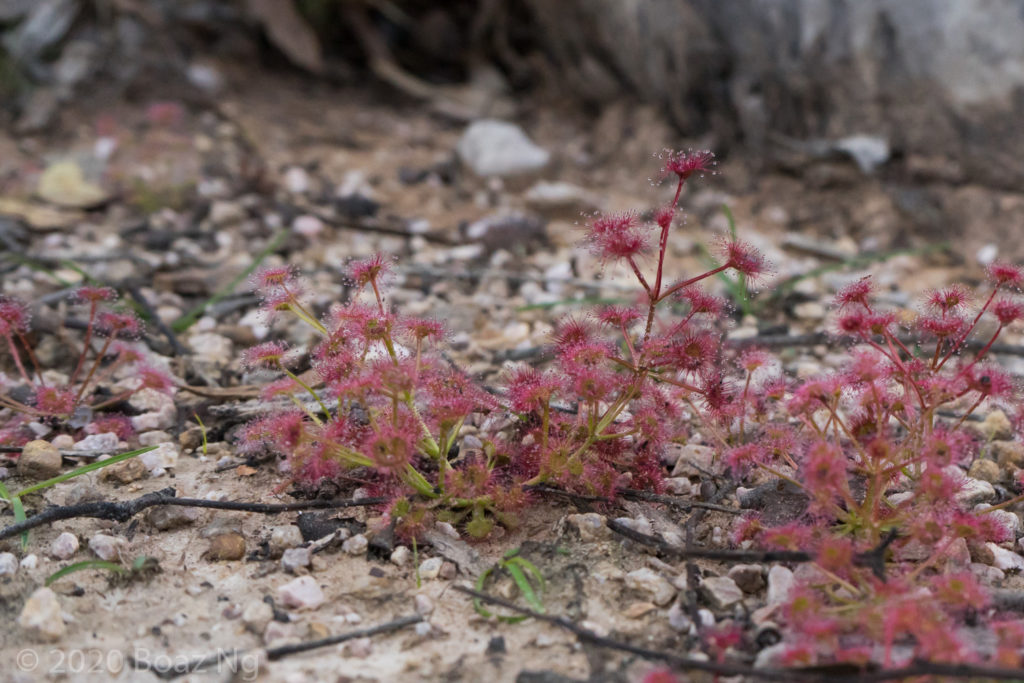
The final species I saw during my 2019 expedition was Drosera monticola. This species is similar to D. purpurascens in its compact morphology, but occurs only on the highest peaks of the Stirling Range in the weathered summit areas above the forest line. The plants seem to colonise most areas in these plateaus but in years between fire are only apparent on the mossy seepages on the exposed cliffs. After fire, the plants grow en mass, occupying the cleared heathy soils and even in the burnt stubs of shrubs. The bright red plants have a strong basal rosette out of which emerge flabellate leaves with long petioles. These leaves are typically borne directly from the basal rosette, although flowering specimens or particularly robust individuals may grow a short stem. Taken out of context of their environment, the species would be difficult to differentiate between smaller specimens of Drosera purpurascens.
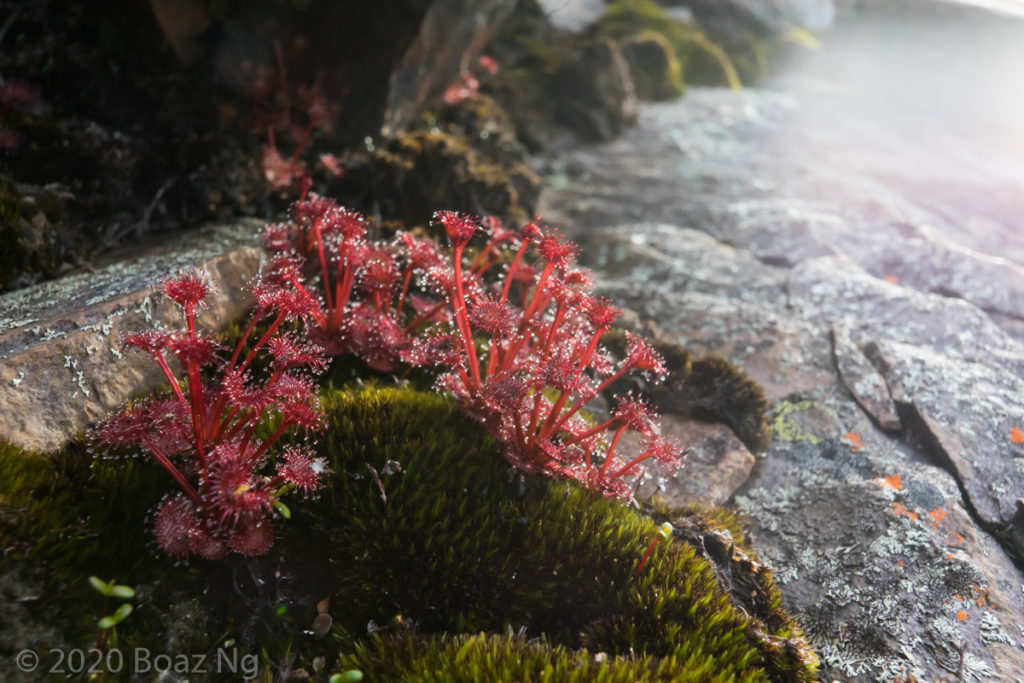
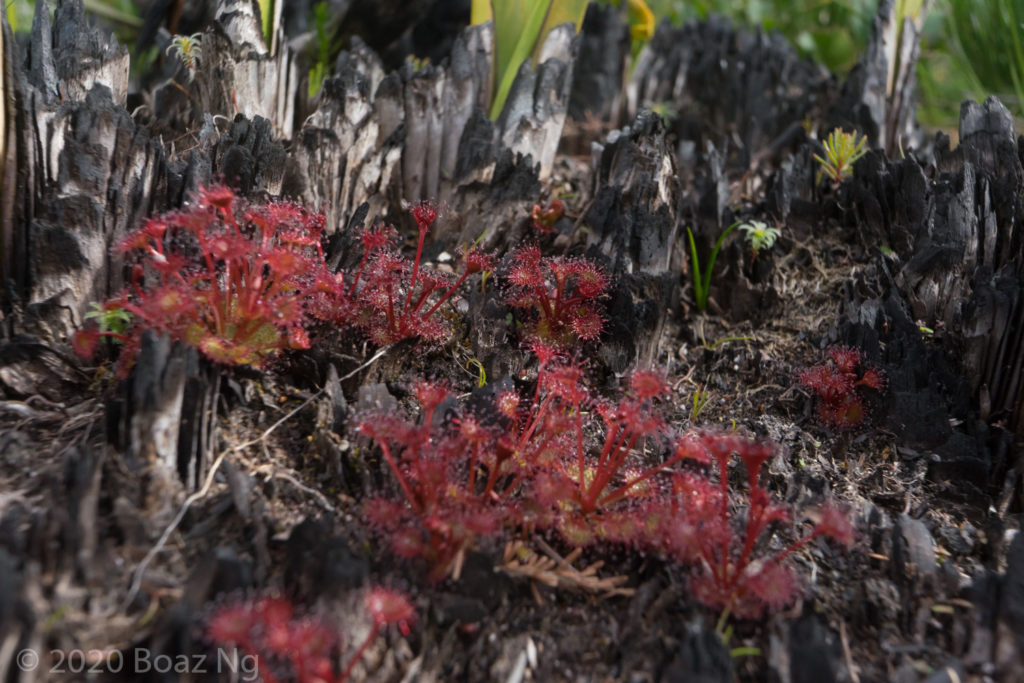
Two more species occur that I did not sight during my expedition. Drosera fimbriata is a rare erect species that grows in patchy areas along the south coast. It is unique for having whorls of non carnivorous leaves at its base. Drosera prostrata grows north of Geraldton to Shark Bay. It is a prostrate species with thin stems that sprawl along the ground.

